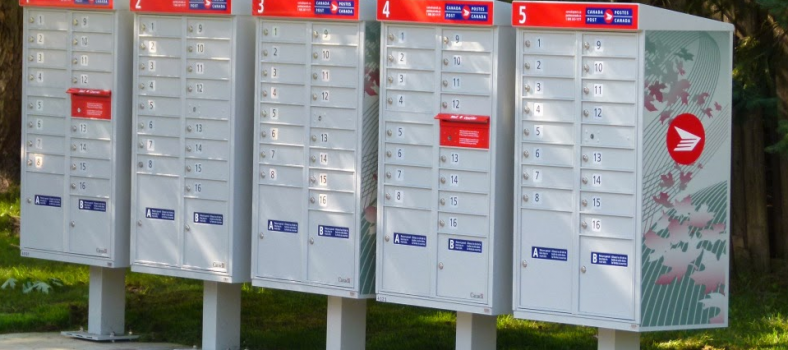It isn’t hard to argue that 2016 was a very difficult year for humanitarians and charitable people of every ilk, with the Syrian war and the refugee crisis serving as a horrific constant in a year punctuated by natural disasters and terrorist attacks. We have all seen reports of the toll this is taking on people’s psyches and Direct Marketing spoke to experts across the fundraising industry to better understand how the past year has impacted when and how people give, as well as the larger trends shaping the industry.
“Disruption” was the word of the year

Nicole Nakoneshny
When asked about the key trends she is noticing in the Canadian fundraising industry, Nicole Nakoneshny, vice president at KCI Ketchum Canada Inc. and editor of their Philanthropic Trends publication, doesn’t hesitate: “I think it’s a continuation of what has been the key trends in the last couple of years and the word I would use to fully encapsulate it is ‘disruption.’
“Just like so many other parts of our lives, so many other sectors, so many other industries, we’re being disrupted. In large part by technology but also by generations, by the changing demographics of Canada. The rules are changing, the ground under our feet is really shifting and some of the old ways we did things, some of our old and traditional rules and norms just aren’t applying.”
Nakoneshny notes that while there was a time when Canadians needed to engage with charities in order to be charitable, that is no longer the case. “There’s a fundamental redefinition that’s happening for Canadians around how they think about being charitable, how they engage with charity, how they make donations to charity,” she notes. Engaging with well informed, empowered donors requires evolving strategies.
“What I think that means for charities is that there are two key works that are important for them at this point in time: relationships and relevance,” says Nakoneshny. “Relevance, at the most macro level, is the need for us to continue to demonstrate relevance. And we always say that we are in a relationship business—but the reality is that at that mass-market level we tended to be pretty transactional out of necessity, because it was really hard for any organization to build relationships with hundreds or thousands of people.
“Charities that are able to demonstrate relevance and crack the nut on building closer relationships with people at all giving levels will be the ones that are able to really succeed over the next period of time.”
Embracing a new definition of loyalty

Ryan Garnett
There is never any shortage of good causes for charitable people to support, a fact highlighted the tumultuous political, economic and environmental climate of 2016. Ryan Garnett, head of integrated marketing ant Harvey McKinnon Associates, believes that charities and fundraisers will continue to be challenged by increasing competition and changing donor behavior.
“One of the things that we are seeing increasingly is donors who have their pool of money and they’ll pick some charities for one year,” notes Garnett, “ and the next year they may pick totally different charities because they have limited resources so they want to try to stretch those resources as far as they can, which sometimes means they might skip donating to one of their favourite charities for a year because they have so many others that they want to support as well.”
This trend is likely to lead to less consistent fundraising results from year to year, but Garnett believes that there will be rewards for charities who respond to changing customer behavior by focusing on the long term. By leveraging digital channels to engage younger donors fundraisers can maintain or even increase lifetime giving by staying connected with donors.
“You’re not going to get those large donations from 25-, 30-, 35-year-olds,” Garnett acknowledges, “they’re trying to buy their first house, start a family—they just don’t have a lot of money. But if you can find ways to engage them, get them excited about your cause, get them talking to their friends about their cause, maybe set up a fundraising page or participating in an event where they ask their friends to support them—the more of that you can do to keep them closely connected, when they turn 40, 50, 60 and they start to have more money, they are going to think back to all that great history they have with you and you’ll be one of the first charities they go to.”
Scalable solutions make analytics accessible for charities of all sizes

Rupen Seoni
“I’ve seen a very significant movement in the last two years in the sophistication in the kinds of questions we are being asked,” says Rupen Seoni, a senior vice president at Environics Analytics who leads its government, health care and not-for-profit practice. He notes that “the big charities are doing some really interesting, smart things in terms of their targeting and their strategies” but small- and medium-size charities are increasingly finding affordable ways to better understand their donors.
“We have very small charities coming in and just needing a little bit of basic information and that helps them move the marble forward a little bit,” says Seoni. “I’m not a big believer that budgets are an issue because there are different levels of what can be done—and I don’t just mean this from Environics Analytics’ perspective, I’m talking generally. Using information appropriately to make better decisions about who you’re going to target and how you’re going to target them—there’s different strokes for different folks.”
Seoni credits this trend to the growing appreciation within the fundraising industry and beyond of the important of data-driven insights that lead to better business decision. “So when I hear budgets are a problem I actually believe that’s a symptom of a bigger problem—that there are still a significant number of practitioners out there who don’t understand the impact of good insight and targeting.
“I really think it’s important for charities to not only understand the profile but really understand the decision-making process. How does somebody come to donate to whatever the cause is? What are the motivators that are there? Some charities really do this well and others don’t do it as much. In our fragmented, splintered world, really understanding your audience becomes more and more important.”
Pros and cons of text-to-give

Steve Milcik
“The technology is changing to adapt to the circumstances, which is social media,” says Steve Milcik, national sales manager, Donor Perfect Canada Inc. “So we’ve got things like mobile apps and mobile-responsive donation forms so that folks can give a donation on their iPhone without missing a beat. Everything is in cloud technology, so now you’ve got volunteers that can walk up to you at an event or, heck, at a Starbucks and take your credit card and swipe it through their iPhone and take a donation.”
Milcik notes that while having more direct means of connecting with donors is a great thing, every channel has its own nuances and there are costs and payoffs to each.
“The ways to give have expanded to meeting the needs of what social media has done to the world-wide giving psyche, so we have expanded to meet those needs,” says Milcik. “Text-to-give is wonderful for responsive causes, meaning there’s an earthquake and we need to do something now. We need to help people now. In those circumstances text-to-give is wonderful.
“But organizations such as the Humane Society or the Red Cross, these types of organizations are looking to develop a long-term relationships as much as possible and with text-to-give you really can’t do that because all you’re getting at the end of the day is the money. You’re not getting much information about the person who gave you the money. So you can’t develop a relationship for more long-term development of increased fundraising with this one person. But you got the money! So it’s great for immediate response.”
Stop making it harder for donors to give

John Lepp
John Lepp, partner at Agents of Good, believes that the urge to be charitable is a natural component of the human condition. “Human beings want to be part of something” Lepp notes. “We want to be part of the tribe. I think giving is a way to be part of the tribe.
“I always say it’s easy to complicate things, but it’s very difficult to simplify things. Our sector and our world have become so complicated, there are so many difficult processes to get through. We’ve not made it easier for donors to give, we’ve actually made it harder—to give, to take the action we want them to take.”
Lepps gives the example of a typical fundraising direct mail piece, where there are a number of decisions a recipient needs to make, even before they decide whether or not they want to give or not. He notes that even on the reply form alone, donors must decide whether they want to give a single gift and how much, whether they are interested in legacy giving or monthly giving, and whether they are interested in receiving the organization’s newsletter. If giving monthly, do they want to do it on the 1st or the 15th of the month? Do they want to use their Visa or provide a blank cheque?
“There’s all these things, and basic marketing is—the simpler you make it for someone to make a decision, the more apt they are to make that decision the way you want them to make it. And so we always tell our clients to ask for one thing.” So if you are asking for $250, only ask for $250.
“It’s all in the pursuit of more data, more information on our donors. Why? What’s the goal here? If you want to ask them for a monthly gift then do an appeal about monthly giving in a separate piece.”
Millennials are now force versus merely a source

Vincent Duckworth
“Donor behavior was driven by one word in 2016, and that was uncertainty—economic uncertainty, political uncertainty, global uncertainty, personal uncertainty,” says Vincent Duckworth, partner at ViTre?o, “and that always impacts giving. People who have the ability to make significant gifts, in those times most of them will pause. They didn’t go broke, but they’ll pause. And everyone else is just struggling to get by.”
Duckworth notes that responsive charities who managed to effectively convey the urgency of their cause did well in 2016, and he believes there was a correlation between those who are less adverse to uncertainly giving more generously in the climate of the past year. Millennials also stepped up to the plate in significant ways.
“I would say that we will look back on 2016 as one of the watersheds of Millennial giving,” says Duckworth. “I remember five years ago, even three years ago the common phrase was that Millennials don’t give because they don’t have any money. That’s not really true anymore. And they feel differently about uncertainty than previous generations.
“One of the things we’ve noticed and one of the things we talk about is that intersection between technology and Millennials in 2016 and philanthropy. They are actually starting to become a force in philanthropy as opposed to just a source in philanthropy. As opposed to just a demographic they are considered to be now very quickly rising up into a category of a donor population that you would look at in terms of major gifts.”
Charities are no longer the voice of authority

Dan Abraham
“When I started it wasn’t uncommon that a fundraising program would be: a charity would send us all of their donors and we would phone all their donors and then we would send them all the money,” laughs Dan Abraham, senior director of fundraising at Stratcom. “Now, there’s a lot more strategy, there’s a lot more slicing and dicing and a lot more attention paid to budget and return on investment. There’s a much higher level of sophistication and its more business-like, I think.”
Abraham observes that while there was a time when people running charities were likely to be activists with personal ties to the cause, now it is more likely to be someone with an MBA. Charities have become more sophisticated while at the same time donors are much more empowered.
“Donors want to have more of a conversation rather than just having us inform them about what the charity is doing,” says Abraham, noting that donors have become more responsive to efforts to engage them in order to understand why they care about a cause and their wider interests.
“The internet just makes it possible to be a lot better informed now,” says Abraham. “Fifteen years ago if we were calling on behalf of a charity, let’s say there was a research breakthrough, there was a very high probability that what we are telling them is something they have never heard before. Charities used to be a voice of authority in that way.”
Abraham acknowledges that dealing with an empowered donor means that charities have less control over the message, but overall he sees this as a positive change. “You want people to be really passionate about your cause—they are the ones who are most likely to give. All the other factors kind of fall by the wayside if you can really connect with somebody on an emotional or intellectual level.”
Heroes and villains drive action

Stephen Thomas
“Nationally, for a lot of social justice causes and environmental groups and so on, [2016] was not a good year because Harper was a fantastic villain and you need a villain to raise money,” observes Steve Thomas, chairman and owner of Stephen Thomas Ltd. “It’s something we’ve been teaching for a long time—you need a hero, you need a villain, you need a vision and you need a recipient. Then you create a proposition.”
Thomas observes that while increasingly close ties to the mainstream marketing industry have benefited his clients (Stephen Thomas Ltd.’s President and CEO Neil Gallaiford and Director, Brand and Integrated Marketing Jennifer Meriano both bring strong agency backgrounds) the industry does not appear to be progressing evenly.
“There’s a lot of shoddy fundraising,” says Thomas. “We all work so hard to educate people with things like the Toronto Congress and the one in the Netherlands and so many people don’t listen. Everybody thinks direct mail is dead and it isn’t. It’s doing quite well, thank you very much.
“By and large, direct mail isn’t nearly as good now as it was in the late 90s and early 2000s
It tends to be done by junior-level people who don’t know even some of the basics and their betters are asking, ‘why can’t we be making a fortune through digital?’ and so on. But even digital—there’s so many emails sent out, the channels are so different and with so many emails that I see people clearly don’t understand the channel, because in digital it has to be immediate.”
This report originally appeared in the February 2017 issue of Direct Marketing.




